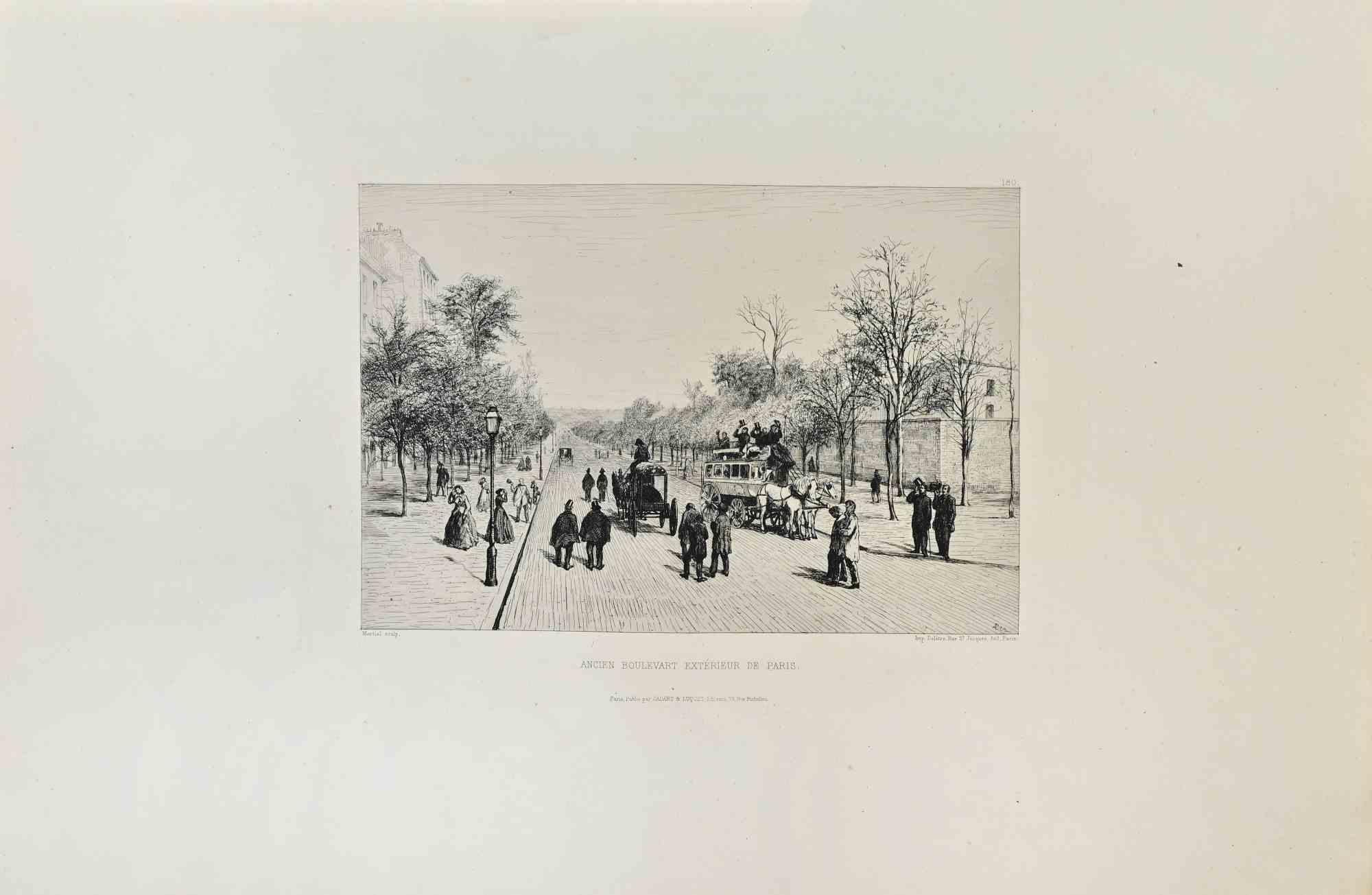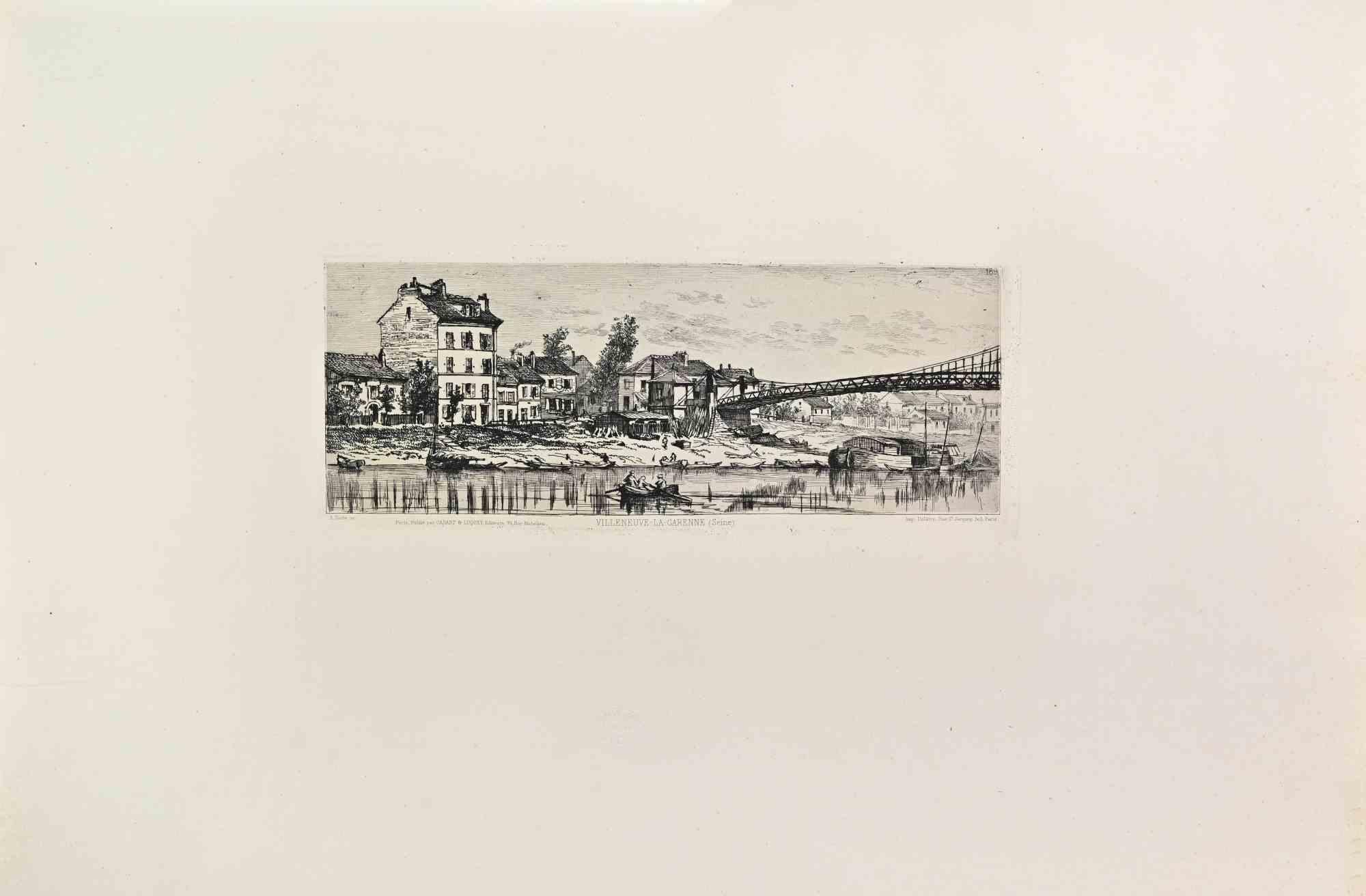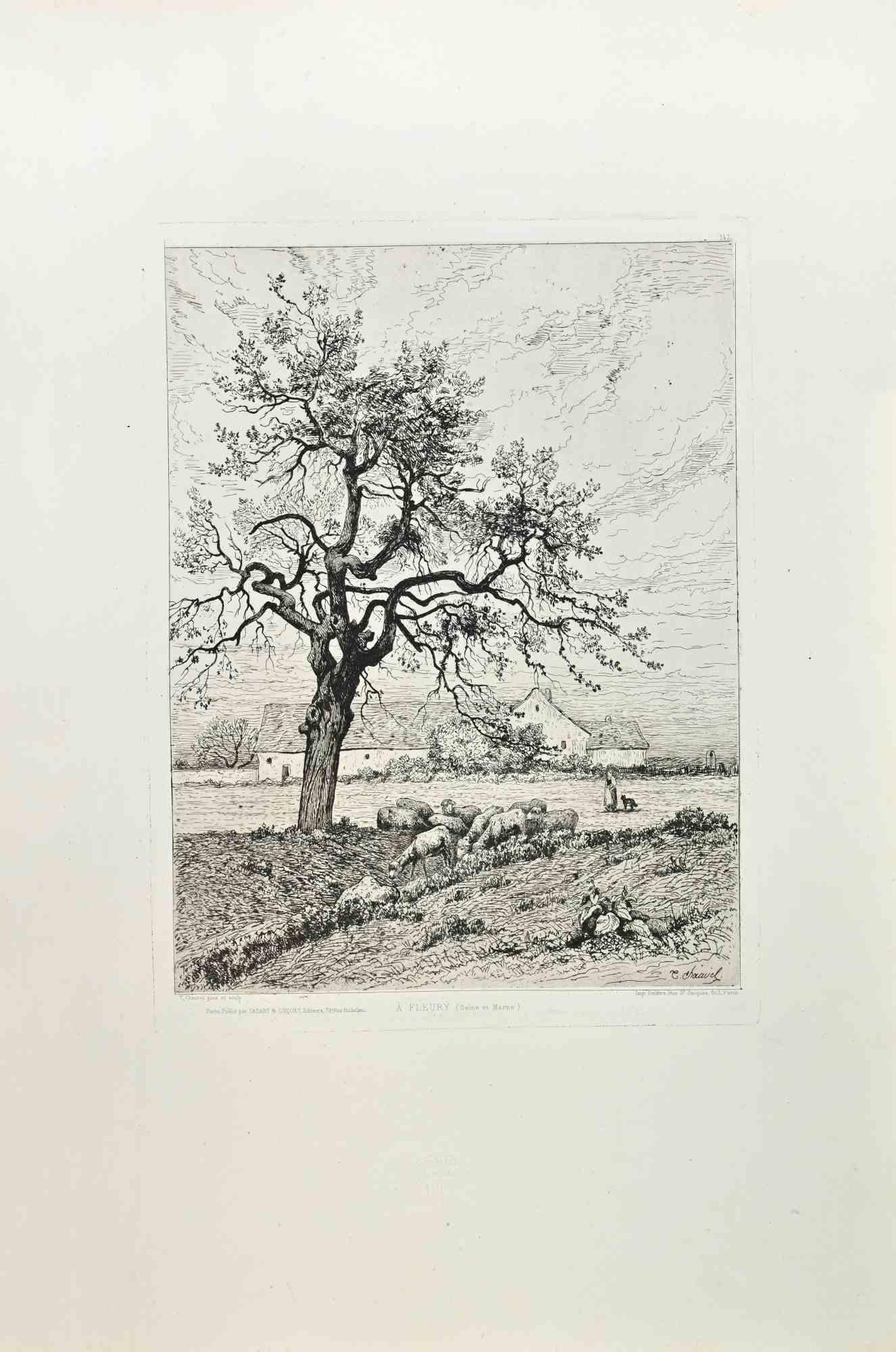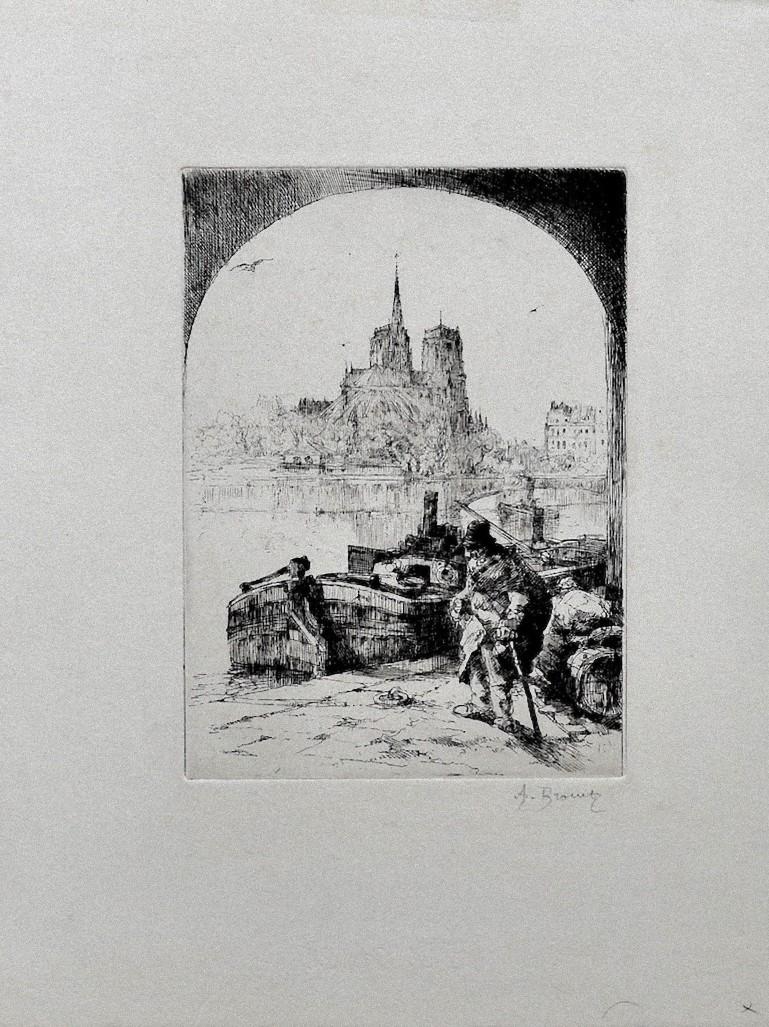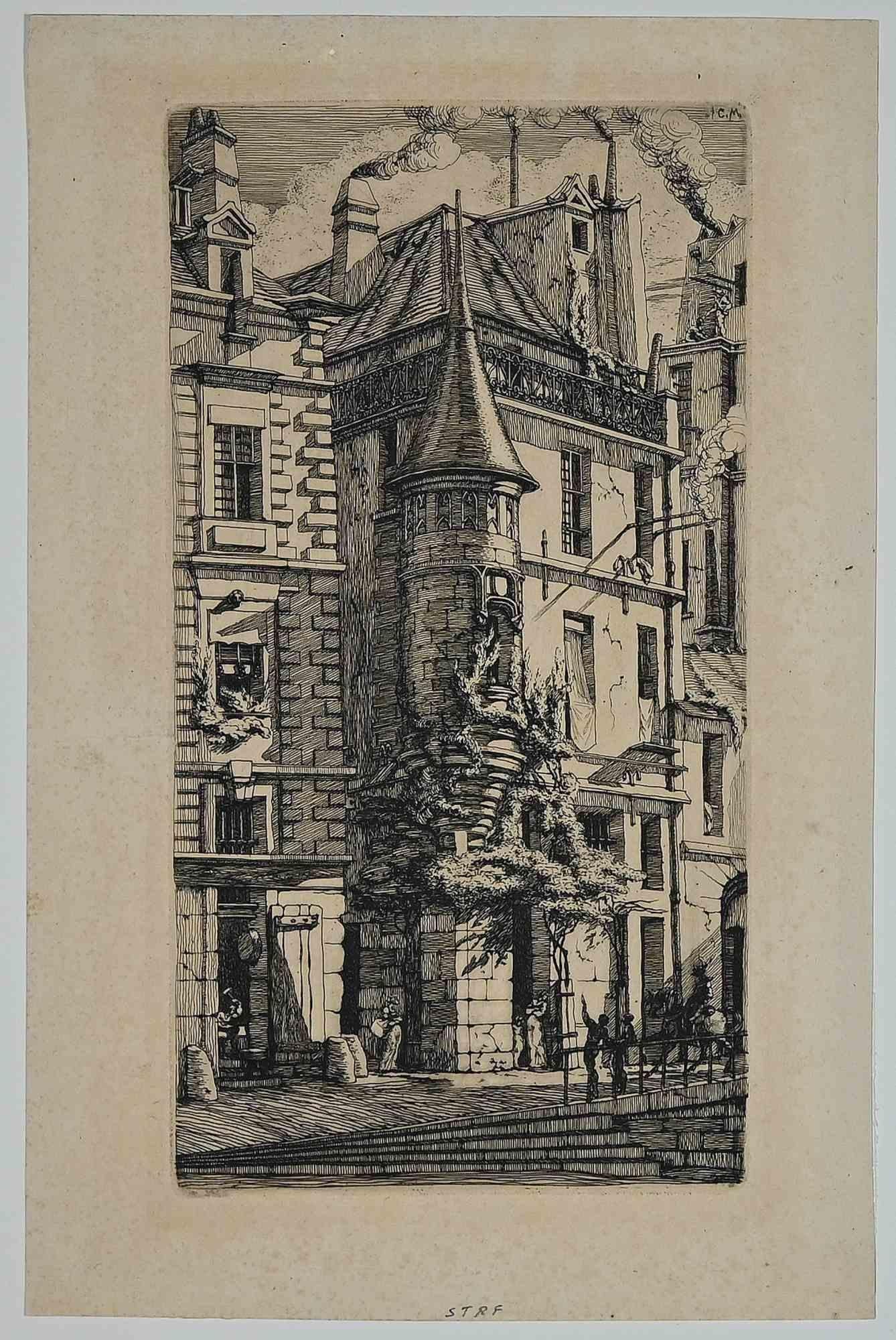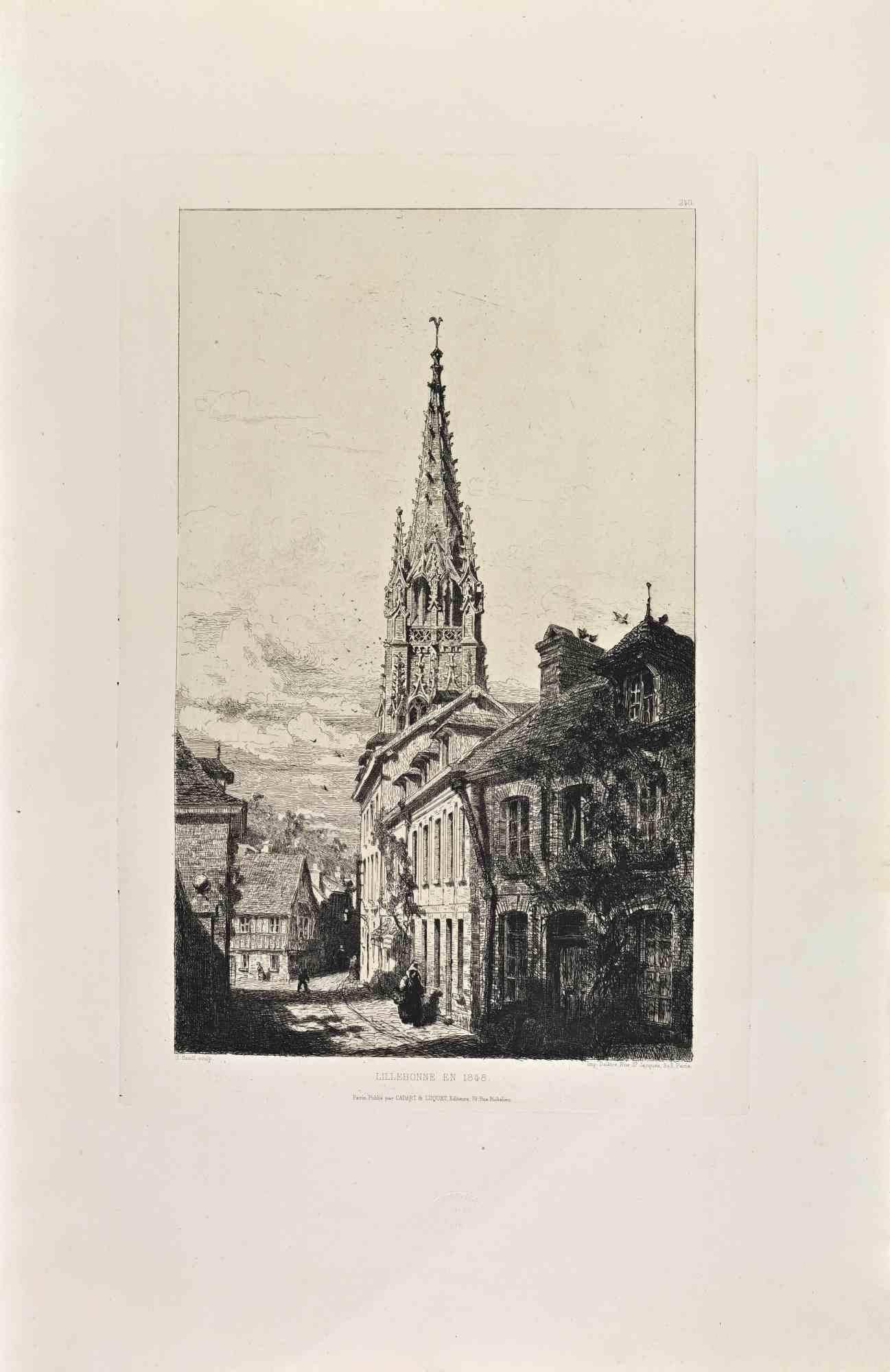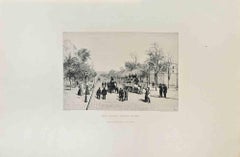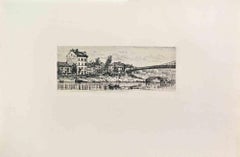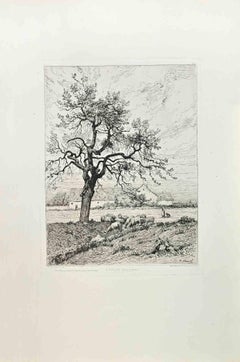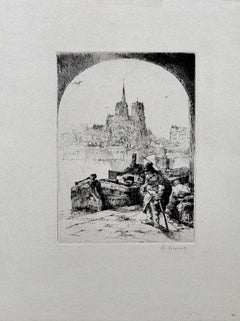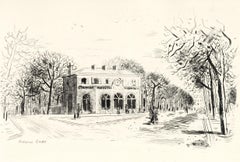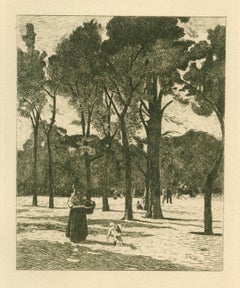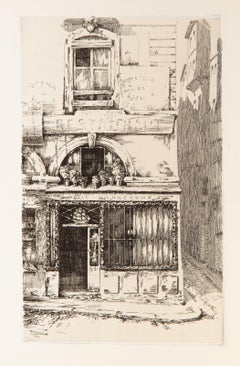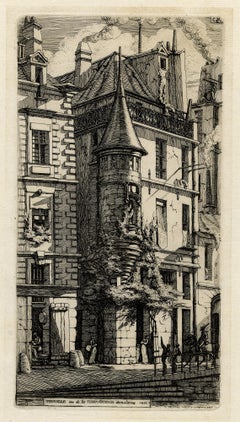Items Similar to Metz. Fin Juillet 1870 - Etching by Auguste Lançon - 1870
Want more images or videos?
Request additional images or videos from the seller
1 of 6
Auguste LançonMetz. Fin Juillet 1870 - Etching by Auguste Lançon - 1870Late 1800
Late 1800
$457.18
$653.1130% Off
£347.81
£496.8730% Off
€385
€55030% Off
CA$641.35
CA$916.2230% Off
A$699.83
A$999.7630% Off
CHF 362.07
CHF 517.2430% Off
MX$8,372.09
MX$11,960.1230% Off
NOK 4,573.82
NOK 6,534.0230% Off
SEK 4,294.74
SEK 6,135.3530% Off
DKK 2,932.77
DKK 4,189.6730% Off
About the Item
Metz. Fin Juillet 1870 is a black and white etching realized by Auguste Lançon (1836-1887) in 1870.
Remarkable and original example of Lançon's etched art. Beautiful artist's proof describing an ordinary life scene in the city of Metz at end of July.
Hand-signed and dated by the artist on plate.
Dimensions: cm 39,5 x 56. Overall good conditions, except for some discoloration on margin due to aging.
Auguste Lançon (1836-1887) was a great French painter and etcher.
He became famous especially for his artworks picturing military scenes, warfare and animals.
During the Franco-Prussian war (1870-1871) he was appointed sergeant of a battalion; he was captured and imprisoned for a period of six months. These war-experiences inspired the creation of numerous etchings on this conflict.
- Creator:Auguste Lançon (1836 - 1887, French)
- Creation Year:Late 1800
- Dimensions:Height: 17.52 in (44.5 cm)Width: 12.21 in (31 cm)Depth: 0.04 in (1 mm)
- Medium:
- Movement & Style:
- Period:
- Condition:Insurance may be requested by customers as additional service, contact us for more information.
- Gallery Location:Roma, IT
- Reference Number:Seller: M-1062491stDibs: LU65036048162
About the Seller
4.9
Platinum Seller
Premium sellers with a 4.7+ rating and 24-hour response times
1stDibs seller since 2017
7,798 sales on 1stDibs
Typical response time: 1 hour
- ShippingRetrieving quote...Shipping from: Grasse, France
- Return Policy
More From This Seller
View AllAncien Boulevard Extérieur de Paris - Etching by Adolphe Martial-Potémon - 1870s
By Adolphe Martial-Potémont
Located in Roma, IT
Ancien Boulevard Extérieur de Paris is an artwork realized by Adolphe Martial-Potémon in the 1870s.
Etching.
Image size:20x28.
Good conditions.
Realized for the "Société des Aq...
Category
1870s Modern Figurative Prints
Materials
Etching
Villeneuve la Carenne - Etching by Alfred Taiée - 1860s
Located in Roma, IT
Villeneuve la Carenne is a black and White etching realized by Alfred Taiée in the 1860s.
Titled in the lower.
Image size: 10x28.
Very good impression with wide margins and a ver...
Category
1860s Modern Figurative Prints
Materials
Etching
À Fleury (Seine et Marne) - Etching by Eugène Thirion - 1865 ca.
Located in Roma, IT
Etching on laid paper
Signed in plate lower right: E. Thirion
Published by Cadart & Luquet, Éditeurs, 79 Rue Richelieu, Paris
With the blindstamp of the Société des Aquafortistes, lo...
Category
1860s Modern Figurative Prints
Materials
Etching
Paris - Original Etching by Auguste Brouet - Early 20th Century
By Auguste Brouet
Located in Roma, IT
Paris is an original etching on paper, realized by the French artist Auguste Brouet.
Passepartout dimension: 35 x 32 cm
In very good condition.
This artwork represents the river...
Category
Early 20th Century Figurative Prints
Materials
Etching
Tourelle de la Rue de la Tixeranderie - Etching by C. Meryon - 1852
By Charles Meryon
Located in Roma, IT
Tourelle de la rue de la Tixeranderie is an original Modern Artwork realized in the half of the 19th Century by Charles Meryon (sometimes Méryon, 23 November 1821 – 14 February 1868).
Original Etching.
Fine impression printed by the artist.
II/III state on V.
Total dimensions: 24 x 12 cm. Passepartout is included.
Excellent conditions of sheet.
Reference:
Salimbeni no.163;
Schneiderman n. 24;
Delteil n. 29.
Charles Meryon (sometimes Méryon, 23 November 1821 – 14 February 1868). He was a French artist who worked almost entirely in etching, as he suffered from color blindness. Although now little-known in the English-speaking world, he is generally recognized as the most significant etcher of 19th century France. His most famous works by him are a series of views powerfully conveying his distinctive Gothic vision of Paris. He also suffered from mental illness, dying in an asylum. Meryon had sketched in Athens, Algiers and other exotic places he had visited, and by late 1840 decided to take lessons in drawing from the Toulon...
Category
1850s Modern Figurative Prints
Materials
Etching
Lillebonne en 1848 - Etching by George Snell - 1860s
Located in Roma, IT
Lillebonne en 1848 is a black and White etching realized by George Snell in the 1860s.
Titled in the lower.
Image size: 25x37.
Very good impression with wide margins and a very f...
Category
1860s Impressionist Figurative Prints
Materials
Etching
You May Also Like
"Songes de Passy" original etching
By Roland Oudot
Located in Henderson, NV
Medium: original etching. This impression on Canson et Montgolfier wove paper was printed in 1937 in an edition of 500 for the "Paris 1937" portfolio. Printed at the atelier of Jean-...
Category
1930s Prints and Multiples
Materials
Etching
(after) Stanislas Lepine - "L'Esplanade des Invalides" etching
By Stanislas Victor Édouard Lépine
Located in Henderson, NV
Medium: etching (after the painting). This beautiful piece was etched by Auguste Lauzet after Stanislas Lepine, and published in Paris in 1892 by Chamerot et Renouard, for the very r...
Category
1890s Prints and Multiples
Materials
Etching
Au Petit Dunkerque, Modern Etching by Ernest Laborde
Located in Long Island City, NY
Ernest Laborde, French (1870 - 1935) - Au Petit Dunkerque, Year: 1913, Medium: Etching, signed and dated in the plate, Image Size: 9 x 5.5 inches, Size: 11 x 7.5 in. (27.94 x 19.05...
Category
1910s Modern Prints and Multiples
Materials
Etching
Tourelle, Rue de la Tixéranderie démolie en 1851
By Charles Meryon
Located in Middletown, NY
Etching and drypoint on watermarked Hudelist laid paper, 9 5/8 x 5 inches (245 x 129mm) full margins. Second state (of five) after lettering. A superb condition with a pencil inscrip...
Category
Mid-19th Century French School Landscape Prints
Materials
Laid Paper, Etching, Drypoint
Paris - Bibliotheque du Conservatoire des Arts et Metiers, lithograph, 1861
By Philippe Benoist
Located in Melbourne, Victoria
'Bibliotheque du Conservatoire des Arts et Metiers', tinted lithograph by Felix Benoist (1818-1896).
From a series of lithographs depicting the famous buildings of Paris - 'Paris da...
Category
Late 19th Century Naturalistic Landscape Prints
Materials
Lithograph
"Gardiens du Logis" original etching and aquatint
By Félix Hilaire Buhot
Located in Henderson, NV
Medium: original etching and aquatint with drypoint. Also known as "Les amis du Saltimbanque". Catalogue reference Bourcard/Goodfriend 76. Printed in 1902 and published by the Revue ...
Category
Early 1900s Realist Prints and Multiples
Materials
Etching, Aquatint
More Ways To Browse
Franco Prussian
Franco Prussian War
Post Finial
Military Picture
Muro Print
Mystery Of Sleep Dali
Nadia Comaneci
Nature Woodblock
Norman Hirst
Norman Rockwell Clock
Norman Rockwell Tom Sawyer
Nude Flask
Nude With Garter Dali
Odilon Redon On Sale
Oli Epp
Original Etching Roman Emperor
Ota Masamitsu
Oyvind Fahlstrom On Sale
